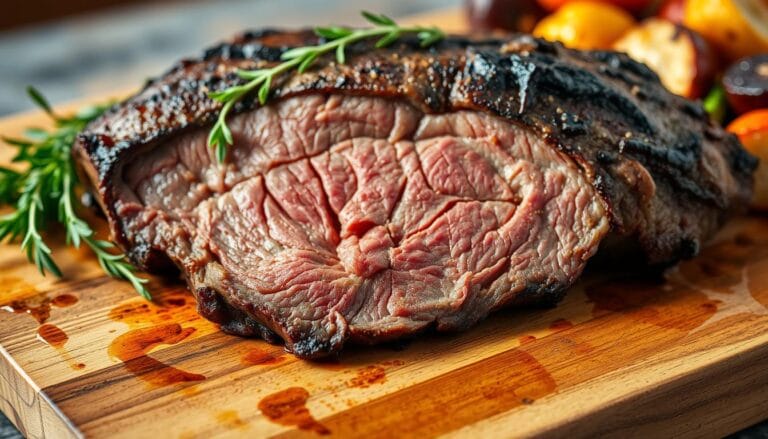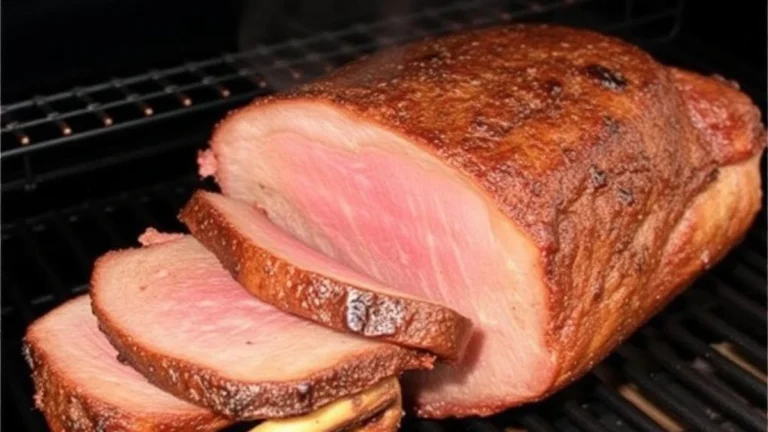What Is Roast Beef Pussy? Unpacking the Mystery
The Mystery Behind the Term
Have you ever heard the term “roast beef pussy” tossed around in casual conversation or seen it pop up on your social media feed? If you’re like most people, you probably found yourself puzzled, intrigued, or even uncomfortable, wondering what exactly it means. You may have even questioned whether it’s something worth discussing or if it’s just another odd expression from the internet’s deep corners. Well, you’re not alone. This phrase, which seems to come from nowhere and go everywhere, raises eyebrows and sparks curiosity, yet many people are still unsure about what it truly signifies.
In this article, we’ll take a deep dive into the origin of the term, how it became part of pop culture, and what it really says about body image and societal perceptions. We’ll also explore the controversial aspects of the phrase and look at its potential effects on how women view their bodies. It’s time to unpack the mystery of “roast beef pussy” and understand why this term still resonates, even though its use is far from universally accepted.
What Is Roast Beef Pussy?
Defining the Term and Its Origins
Let’s start by understanding what “roast beef pussy” actually means. At its core, this term is a slang phrase used to describe a specific appearance of the female genitalia, often associated with prominent or elongated labia minora, the inner lips of the vagina. The visual description is intended to evoke an image of the labia being more pronounced than what is considered “average,” sometimes hanging down visibly outside the outer labia, the labia majora. The term’s somewhat crude and unflattering reference to roast beef stems from the appearance of the labia, which can be perceived as “flappy” or “loose” in some contexts.
Now, where did this term come from? Well, it’s important to recognize that, like many other internet slang expressions, roast beef pussy likely originated in online forums and adult entertainment discussions. Internet communities, especially those centered around adult content, have been known for coining various terms to describe different body types, often without regard to the feelings of those affected by such terms. As is common with many internet trends, once the phrase caught on, it spread like wildfire, entering meme culture and finding its way into casual online discussions, often without much thought about the implications it has on body image.
Why Is It So Controversial?
It’s not surprising that the term “roast beef pussy” has sparked controversy. At the heart of its contentiousness lies body shaming—specifically, the way it draws attention to a natural variation in female anatomy. For many people, the term is seen as derogatory, reducing women to a narrow, and often damaging, standard of beauty. By focusing on the size or shape of labia, the term reinforces the notion that women’s bodies should conform to a specific aesthetic that aligns with what is considered “attractive” in the adult entertainment industry.
When we look at how this phrase is used in media, forums, and pop culture, it’s clear that it often comes with an undertone of ridicule or mockery. This can cause distress for women who may feel self-conscious about their own body, especially if their labia don’t fit into the often unrealistic or idealized standards seen in mainstream media. The term can perpetuate feelings of inadequacy, despite the fact that labial variation is entirely normal and natural.
Table of Contents
The Physical Appearance: What Does “Roast Beef Pussy” Refer To?
Understanding the Visual Description
Now that we have a basic definition, let’s dive a little deeper into the physical attributes associated with the term. When people refer to a “roast beef pussy,” they are typically pointing to an exaggerated appearance of the labia minora. In many cases, this means the labia minora may be larger or longer than the labia majora, protruding outside the outer lips of the vagina. In adult content, this particular appearance is often fetishized and sexualized, which only further adds to the complexity of the term.
The key characteristic is that the labia minora becomes more visible—sometimes quite noticeably so—making the term used to describe it. It’s worth mentioning that such a visual appearance is not an abnormality or a flaw. Women’s bodies come in many shapes and sizes, and there is no one “right” or “wrong” way for the labia to appear. Just as people come in all different shapes and sizes, so do their genitalia.
The Medical and Anatomical Perspective
From a medical standpoint, there is no “standard” when it comes to labial anatomy. In fact, studies show that there is a great deal of variability in the size, shape, and color of the labia minora and majora. Some women have labia that are more prominent or asymmetrical, while others may have smaller or more tucked-in labia. These variations are all part of the natural diversity of human anatomy.
If you’ve ever wondered whether your body’s appearance matches what’s considered “normal,” it’s essential to remember that there is no universally agreed-upon standard of genital appearance. According to a 2014 study published in the Journal of Obstetrics and Gynaecology, 46% of women reported being dissatisfied with the appearance of their genitals, largely due to societal pressure to conform to an idealized standard of beauty. However, most gynecologists and experts agree that variations in labial size and shape are perfectly normal, and no medical intervention is needed unless a woman feels discomfort or distress due to these differences.
The Psychological Impact: Body Image and Self-Esteem
The Effects of Society’s Views on Female Anatomy
When you think about body image, it’s hard not to consider the significant influence that society and media have on shaping our perceptions of what is “normal.” The use of terms like “roast beef pussy” doesn’t just perpetuate unrealistic beauty standards, it also plays a role in shaping how women view their own bodies. As a woman, if you don’t conform to the “ideal” or “perfect” genital appearance, you might feel a sense of shame or embarrassment, even though your body is entirely normal.
This is where the term takes on a deeper psychological meaning. When the media and adult content industry repeatedly emphasize specific body types—often labia that are smaller or more tucked in—people may begin to internalize those images as the standard. Women who have naturally larger or more visible labia may begin to question their attractiveness, leading to a diminished sense of self-esteem.
Challenging Beauty Standards
While the effects of body shaming are evident, there is also a growing movement to challenge these narrow beauty standards. Body positivity advocates argue that no one should feel ashamed of their natural anatomy. The more we embrace diverse body types, the less power these hurtful terms and ideals hold over us.
Social media platforms like Instagram, TikTok, and YouTube have played a significant role in raising awareness about body positivity. Influencers and activists are pushing back against these harmful narratives by showing off their real, unfiltered selves. Campaigns such as #LoveYourself, #NoFilter, and #ThisIsMe encourage people to celebrate their bodies, regardless of size, shape, or appearance.
Debunking Myths About Labial Anatomy
Myths and Facts About Female Genitalia
There’s no shortage of misinformation about female genitalia, and unfortunately, terms like “roast beef pussy” contribute to the spread of these myths. One of the most common misconceptions is that there is a “perfect” way for a woman’s vagina to look. In reality, there are as many variations of female genitalia as there are women. The myth that all women should have symmetrical, small labia minora has been perpetuated by mainstream media, which often excludes women who don’t fit this mold.
It’s essential to challenge these myths and encourage an environment where women feel free to embrace their unique bodies. Medical professionals emphasize that there is no “one size fits all” when it comes to genital appearance. Women should never feel pressured to conform to an ideal that doesn’t reflect their natural body.
Conclusion
As we’ve explored throughout this article, the term “roast beef pussy” is more than just a crude slang expression. It’s a reflection of how society often judges and labels body parts, reinforcing harmful beauty standards that can impact self-esteem. However, it’s essential to recognize that the body, in all its shapes and forms, is natural and beautiful.
By embracing body positivity and promoting healthy discussions around female anatomy, we can challenge the damaging effects of terms like “roast beef pussy” and encourage women to feel confident in their skin. Remember, your body is yours, and it’s perfect just as it is.
Call to Action
Are you ready to embrace your body and challenge societal beauty standards? Share your thoughts and experiences in the comments below, or connect with others in the body positivity movement. Together, we can create a space where everyone feels comfortable in their skin.
FAQs
Q1: What exactly is a “roast beef pussy”?
- This term typically refers to the appearance of labia minora that are more pronounced and may hang below the labia majora, often depicted in adult content.
Q2: Is it normal to have pronounced labia?
- Yes, labial appearance varies among women, and having visible or elongated labia is completely natural.
Q3: Does the term “roast beef pussy” promote body shaming?
- Many believe the term contributes to body shaming by reinforcing unrealistic beauty standards and creating feelings of inadequacy.
Q4: Can I change the appearance of my labia if I don’t like it?
- While some opt for surgery, it’s important to first consider the emotional impact of changing something that is a natural part of your body.
Q5: How can I combat body shaming related to genital appearance?
- Embrace body positivity, educate others, and seek support from communities that celebrate diverse body types.
Table: Labia Anatomy & Variations
| Type of Labia | Description | Percentage of Women with This Appearance |
|---|---|---|
| Typical Labia | Labia minora are slightly visible, not hanging below the labia majora. | 50% |
| Prominent Labia | Labia minora may hang below the labia majora, creating a more pronounced look. | 30% |
| Asymmetrical Labia | One labium is larger or more pronounced than the other. | 20% |






